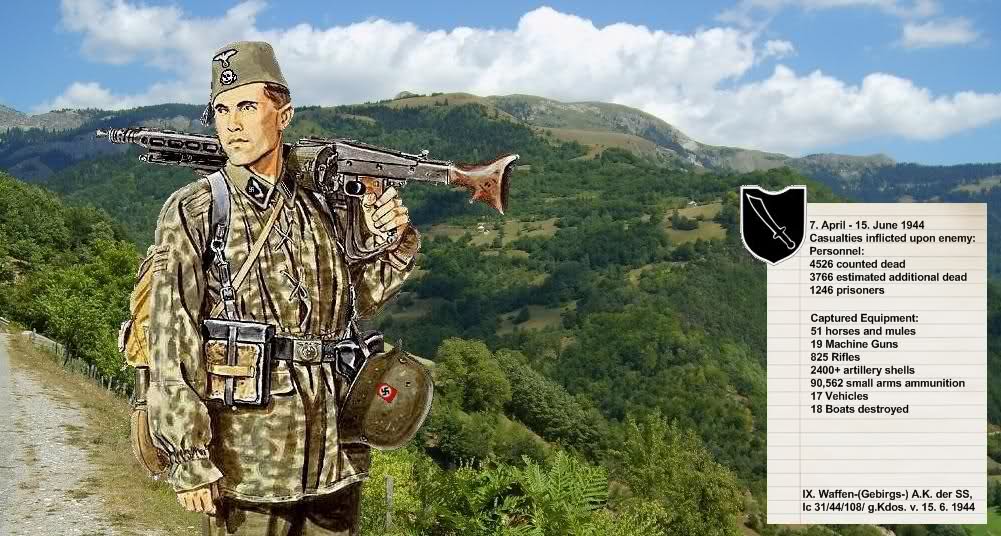Behind the scenes of the fighting
About a month ago, Turkey broke off all diplomatic relations with the Reich, and a week ago Romania switched sides. The Red Army is coming towards the Croatian state even faster now. During the first 20 days of September, over 2,000 men have deserted, having only served so distinguishably weeks prior.
During the same 20 days in September, the predominantly Muslim town of Tuzla fell to the partisans and the 12th Ustasa Brigade switches sides.
Early Desertions
At first it was only the Catholic Croats, Seeing as how it was an overly Muslim oriented division under draconian SS leadership, a huge number simply deserted. Many left simply because they were the minority others because of the professional level of discipline that was exemplified and enforced by the German officers. Many including the latter Muslims deserters went back to their old positions in the Ustasa, Zeleni Kader, Domobran because of the more relaxed athmosphere and overall lower discipline.
In case of the Catholic Croats, less than 300 out of the original 2,800 remained by April 1944.
They were re-organized, taken out of the infantry battalions and put into the Feldgendarm Trupp. In an effort to contain their negative influence on the Muslims.
To sum it up, it was a division Himmler wanted, the Croats opposed, and the Bosnians saw as their last hope.
Prior to the division’s movement into Bosnia, Tito knew he could not match it in the field. For this he made up by offering amnesty every time a huge blow was struck to the Axis on the eastern front. Finally when timing was right, he would benefit from Handschar’s disintegration in ways more than one. The damage he inflicted through this political tactic was many time larger than what he could’ve hoped to achieve by sending an entire partisan corps against 13. SS.
From the Bosnian perspective, once the Germans gave the order to march out of Bosnia, this wasn’t their world war anymore. Many of their German comrades sympathized with them for deserting.
Handschar would also make Tito re-think how he treated the Muslim component of his post war country.
During the war, Muslims made up an obscured figure and lacked representation in the leadership of the partisan circles.
The comments made by some German officers concerning Handschar’s purpose as a “political instrument” proved to be a dead on description in 1944 and it’s still accurate today, as it is still used for various propaganda purposes.
Where are the deserters going?
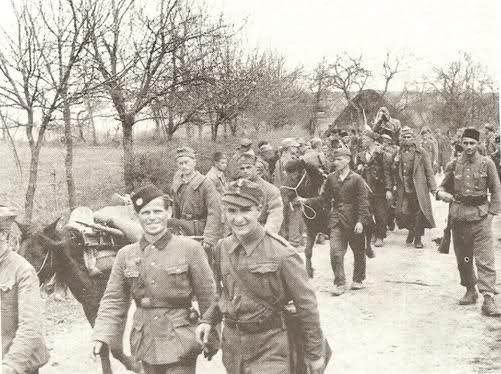
Operating Group Una spring 1944
This picture shows a collection of different uniforms, possibly denoting where these fighters came from.
From left to right, you can see Domobran/Ustasa, Wehrmacht, British (partisan), and M43 SS tunics.
The Rifleman on the far right is defiantly one of the 146 Muslim deserters that left the division in the 7. April-15 June time period. He exhibits many of the give aways of a former Gebirgsjager. K98 rifle, Bergschuhe, M43 SS uniform (complete) and cartridge pouches.
The man on the road guiding the pack mule has a typical look of someone fresh out of basic training. Blouse with removed pockets is another feature unique to uniforms from the Handschar Div.
The big difference here is headgear. Some have gone back to the shorter red Domobran/Ustasa fez while others wear the SS side cap with insignia removed. Belt buckles are another indicator. Insignia patches are missing for a good reason.
If there are indeed former SS men from 13. SS in this column, they deserted having found out the division wasn’t going to operate in western Bosnia. The chances of this group running into a bunch of dead SS-Gebirgsjagers from Prinz Eugen and taking their uniforms and equipment are low.
Huska’s Renegades and other factions
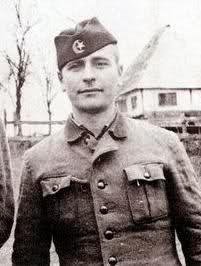
Another fighter from Op. Group Una., still sporting his German issue tunic.
The confusing story of Huska’s forces was centered around the protection of Muslim settlements under their control in northwestern Bosnia. They distinguished themselves in the fighting at Velika Kladusa during the summer of 1943, fighting on the axis side only to re-defect to the partisans in early 1944. What made them valuable to both SS and partisans was their Muslim manpower.
The Germans demanded from the Croats that all of his men be surrendered to the SS, to go towards reinforcing battered units and partisans wanted to form Muslims units of their own (for diplomatic reasons). In reality the men went their own ways, some preferred the easy Ustasa duties when faced with the option of joining the SS, and others switched sides entirely.
It was with the end of Huska’s Vojska and arrival of 13. SS to northeastern Bosnia that Tito’s recruitment of Bosnian Muslims began in full swing. Tito tries to combat the SS recruitment across central and northern Bosnia by forming Muslims units and denying Handschar the replacements it so dearly needed later on. His successes were slim until September.
The partisan propaganda urged that the they do not slaughter their “brother Serbs for Hitler”
So, Tito moved his Muslim units out of Handschar security zone. Fearing that his partisans of the Muslim faith wouldn’t do so well in the face of a Muslim SS Division.
The forces he maneuvered into northeastern Bosnia still lost their morale, especially in the face of big offensives Handschar carried out. The Germans took advantage of this.
They used the example of a partisan officer who deserted to join Handschar, who then urged that his former comrades follow in his foot steps.
Division’s loudspeaker vehicle convinced 150 Muslims from Bihac to join as well as 20 partisans to desert
The partisan desertions were considerable, but not at the scale the Mufti predicted (10,000)
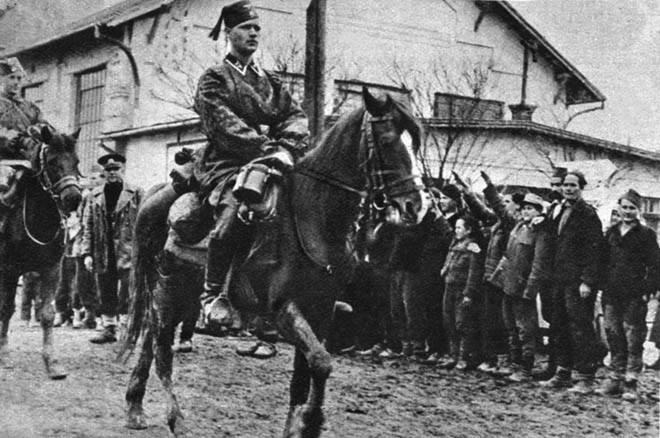
An NCO belonging to 13. SS riding beside a formation of Green Cadre (Zeleni Kader) militia. The youngsters in the background enthusiastically salute. He could be a liaison looking for replacements or new recruits to be turned over to the replacement training unit.
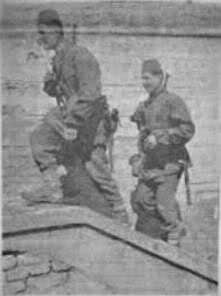
Two brothers visiting their parents, spring 1944.
Men on furloughs were always at the mercy of the Ustasa propaganda to leave the SS for the more relaxed Ustasa or Domobran duties in the vicinity of their villages. This offer would’ve appealing to many in late august of 1944.
The Zeleni Kader faction concerned only with Muslim nationalism openly threatened to increase their own negative influences on 13. SS if their own personal vendetta against the Cetniks wasn’t carried out.
Nevertheless, their bark was worse than their bite, the Green Cadres began leaning towards the partisans in the last months of ‘44.
Yet among all the oddities to happen in this timeframe, none was more out of place than the Muslim Cetnik battalion of the Majevicas, which had its own gospel.

Cooperation with Cetniks, explained.
At the time of Maiglockchen the Cetniks, in fear of reprisals by the Muslim SS Division, pushed for increased cooperation between the Germans, especially the SS units in Bosnia. To the point where they even spread propaganda amongst the Muslim population of northeastern Bosnia, urging for an alliance against the common enemy, communism. The people must’ve been in disbelief of their rediculous proposal.
The cetniks alliance was described loose and proved that they were merely using the enemy. They would only report when they needed food or were low on ammunition.
One German reported noted:
“By no means is this Cetnik propaganda conducted in good faith. The political interest of the present and the fear of revenge from the Muslims who now posses a lethal weapon, the 13th SS Division, are responsible… There is no doubt that when the time is right, the Cetniks will attempt to seize the political and military initiative in eastern Bosnia to achieve their dream of Greater Serbia.”
After quite a few engagements, Cetniks were seen stripping dead division members of valuables, boots, uniforms and weapons from older battlefields. In quite a few cases when they were attached to the SS, they stayed in the reserve until the tide was turned, upon with point they would try to claim their “share” of the spoils of war.
Huska Milkovic’s militia was now being dissolved and its men weren’t allowed (by the Croatian officials) to reinforce Handschar or the newly forming Kama.
His men opted the easy and relaxed duty in the Ustasa militia, little if none chose to join the SS.
Promising better pay, promotions and easier duties, the Ustasa kept spreading its own version of propaganda into the ranks of the division, all the while totally ignoring the worsening situation for the entire Axis front in the east. This went as far as providing false identifications for the deserters.
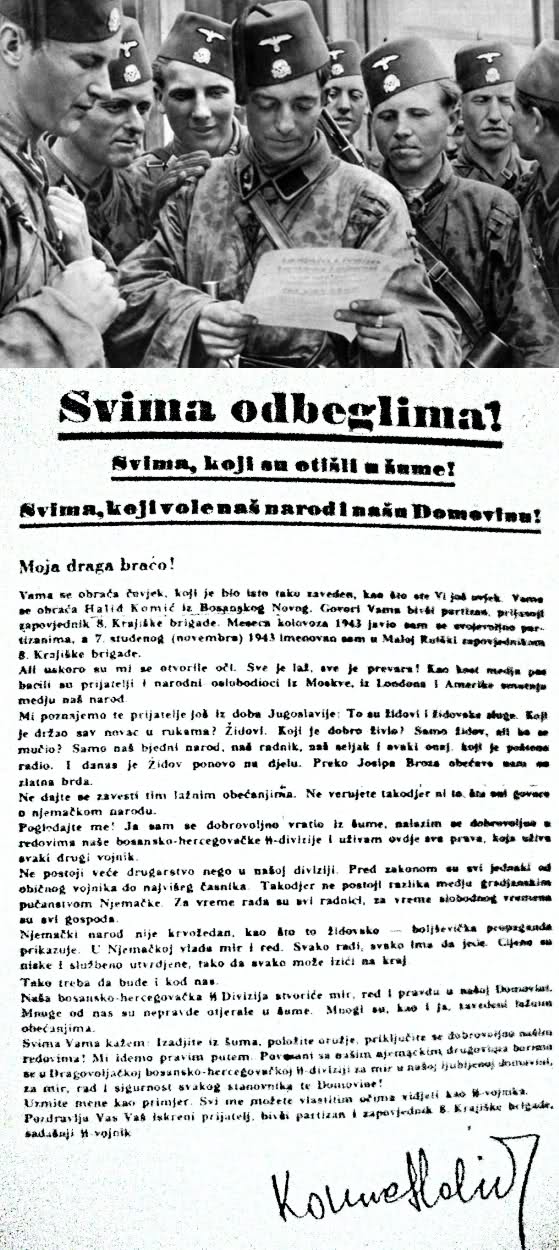
Early September 1944
The allied air offensive “Operation Ratweek” coincided with the Axis pull out from Greece, focusing its attacks on any means of transportation that would slow down or stop German rail and road traffic. According to some sources, Handschar’s Flak battalion had spent some of its summer months interdicting the allied planes south of the division’s area of operations. Towards the end of 1944 it was detached for service (as Flak Abt 509) on the eastern front as well. This same flak battalion had accounted for nearly 60 aerial kills during Unternehmen Osterei.
Battles and Skirmishes of late 1944
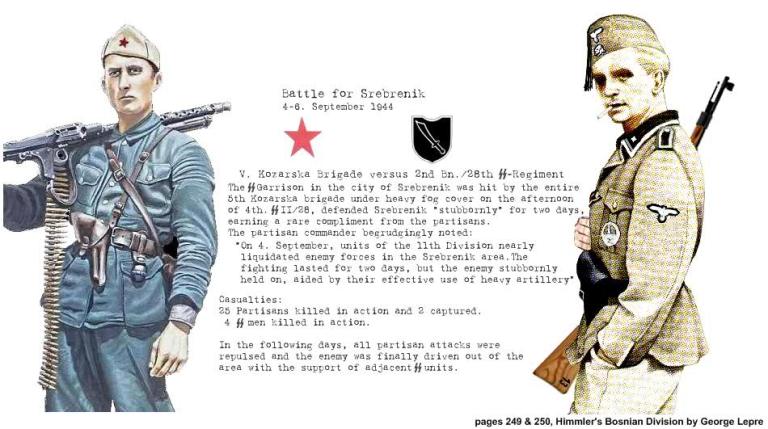
Right: SS Scharfuhrer with a Mauser rifle
Battle for Srebrenik
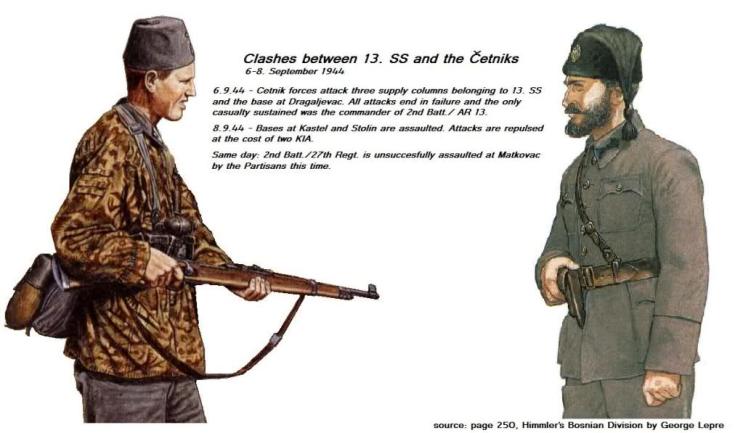
SS Private with 98k carbine.
Handschar and the Cetniks
In coordination with allied strafings of axis units, the partisan activity kicked up as well. Tens of kilometers of railroads were sabotaged. Making things worse, the Croatian units in the division’s western flank were suffering from mass desertions and were no longer considered reliable. Thus followed a re-shifting of units to meet the partisans in the Gracanica-Malesici-Doboj area.
1st Batt. 27th SS Regt was dispatched to Simin Han, 2nd Batt. to Rastocnica. While Regt. 27’s 3rd Batt, and 28’s 2nd went to the Srnice area. A few days of heavy fighting went by and Slatna eventually fell to I/28.
13. Sept – positions relieved by Ustasa units, rest and re-fit in Brcko.
17. Sept. 1944 – Tuzla falls to the partisans. Which claim to have stormed it’s garrison and took control, when in reality many sources claim no one was defending the town.

Battle of Janja 3-5. Oct. ’44
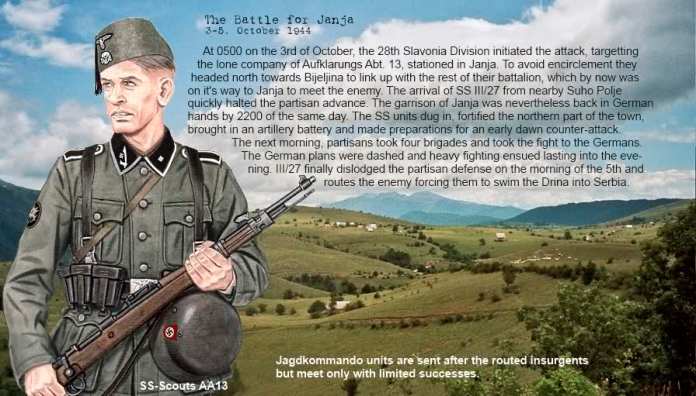
Ambush at Vukosavci, 9. Oct. ’44

Leaving Bosnia:
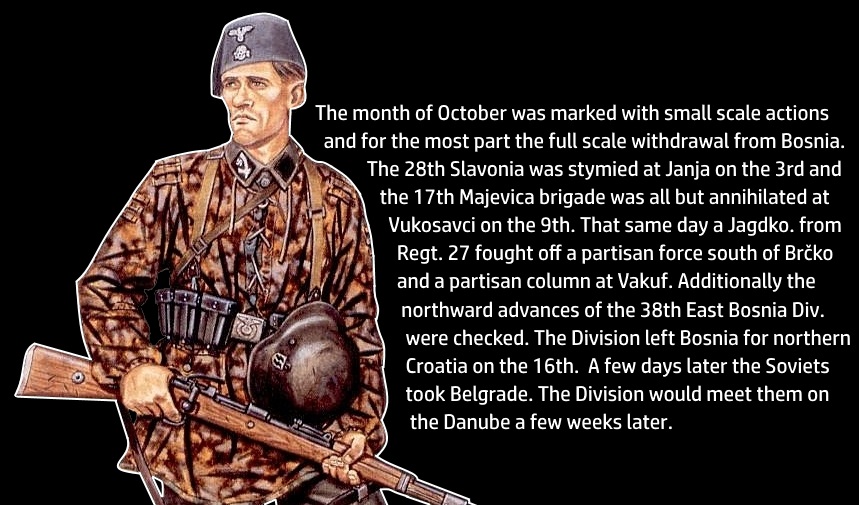
The Great March 16-24. Oct. ’44

Handschar’s Second Mutiny:
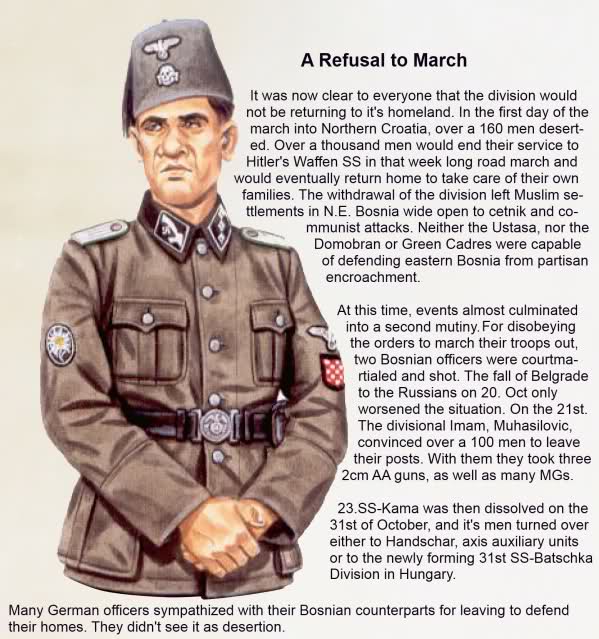
Defection:
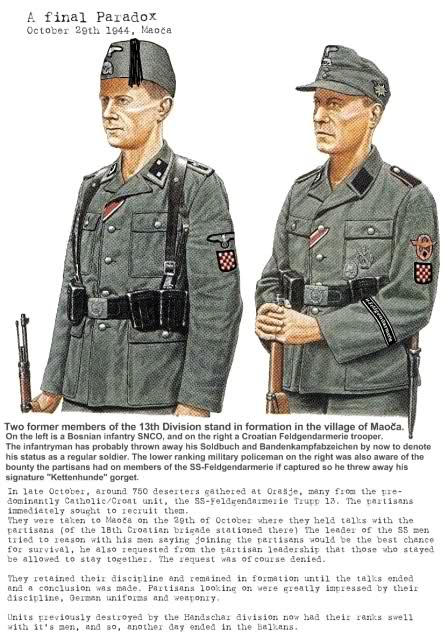
More bad news followed when Himmler ordered to disarm around 2,000 Bosnians. Surprisingly his main concern was the loss of weapons, not manpower. A good number of those 2,000 were put to use with auxiliary units in Croatia to perform maintenance and construction duties.
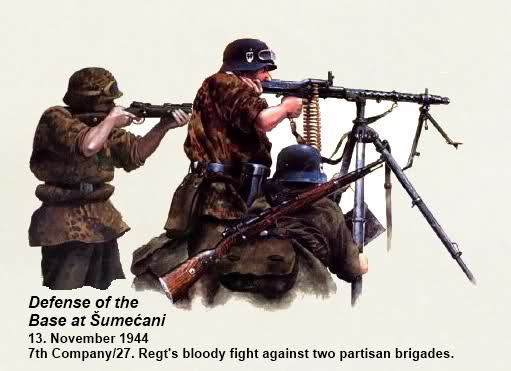
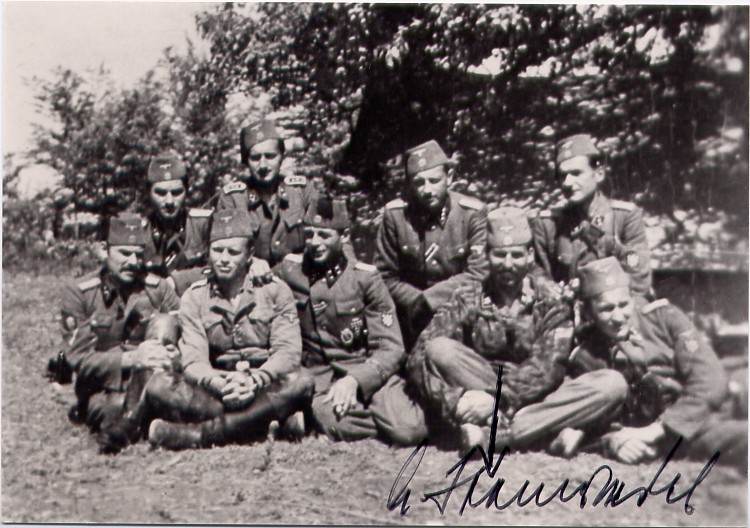

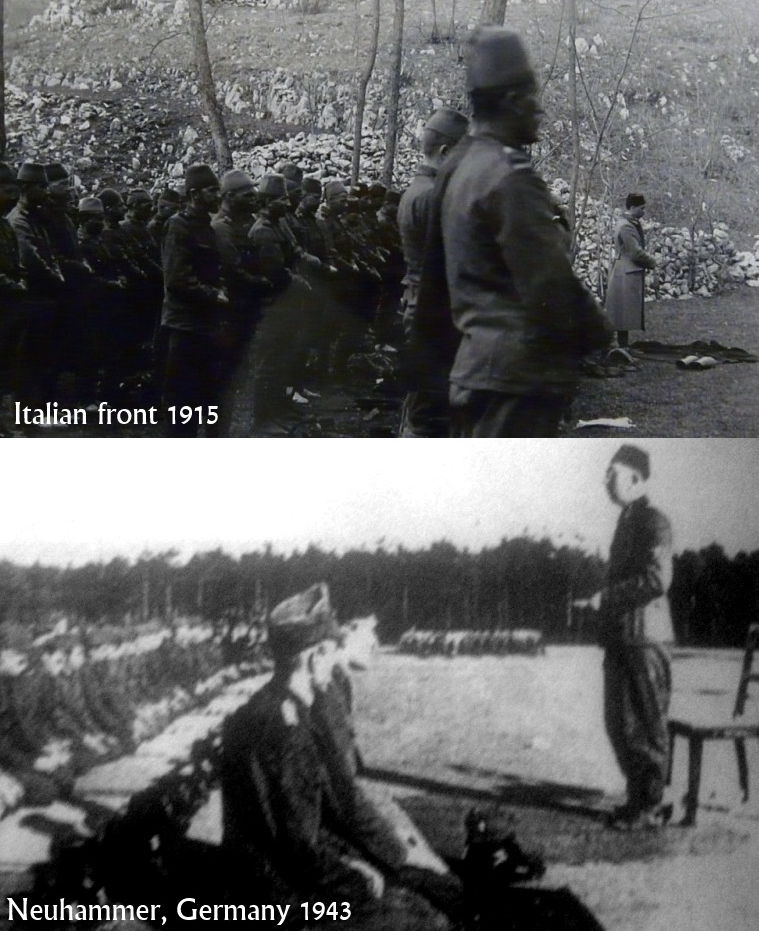
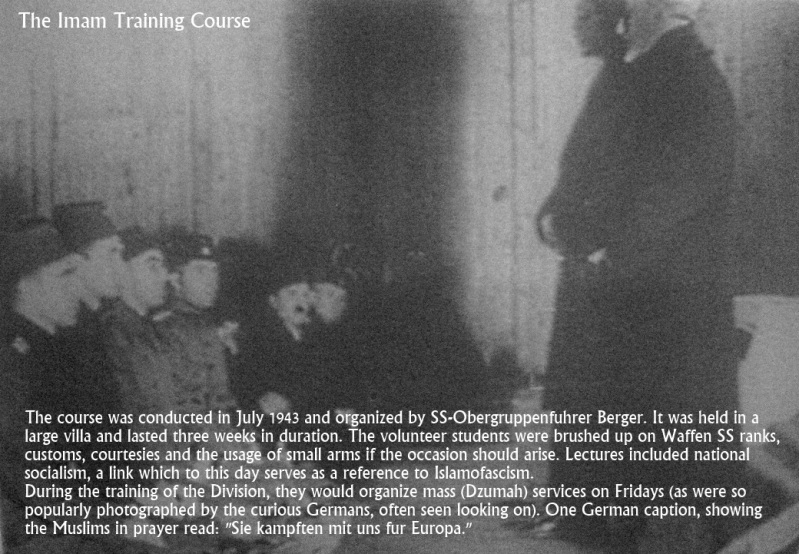
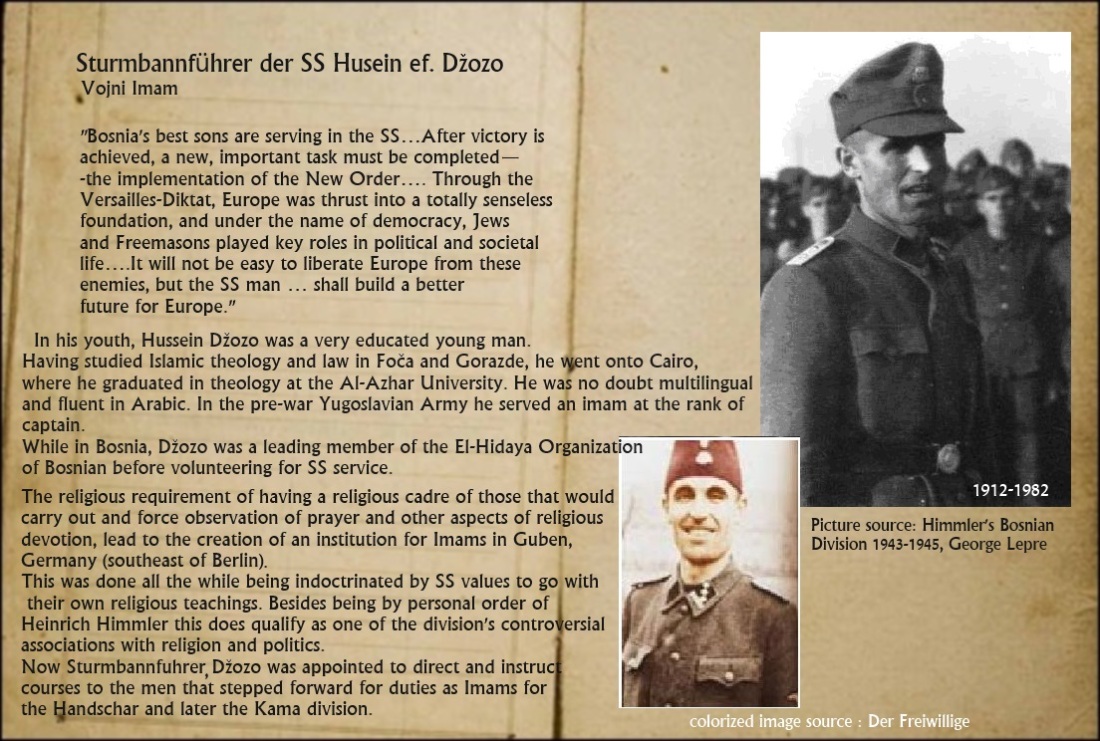
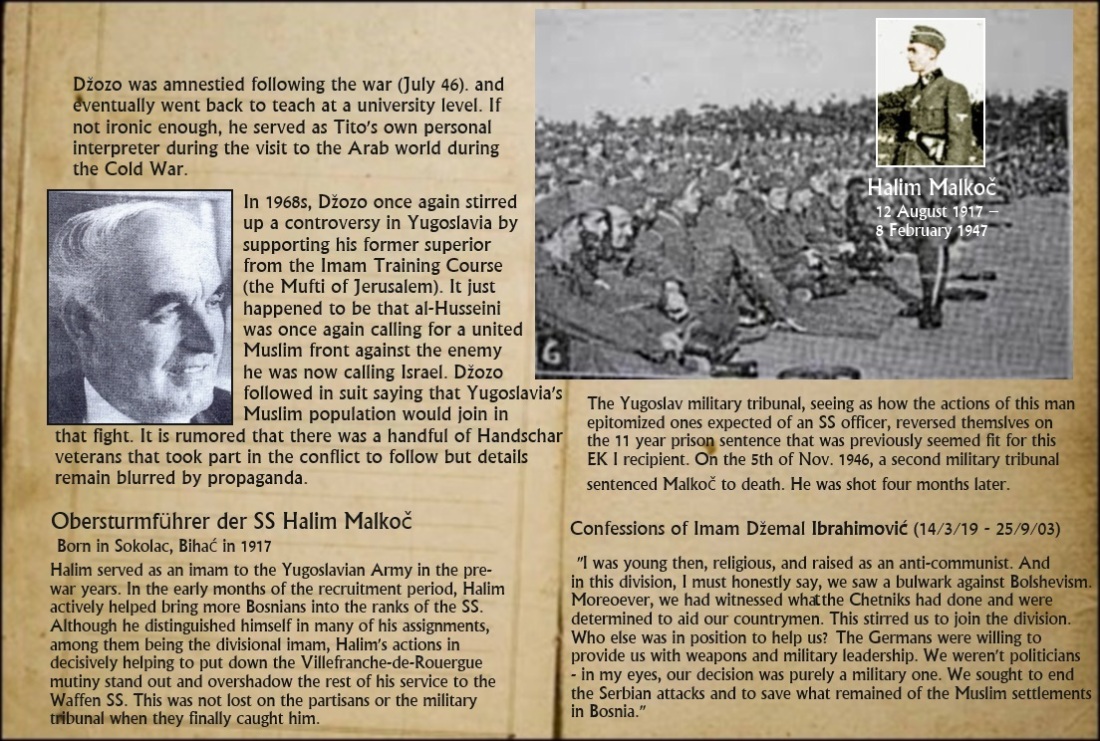

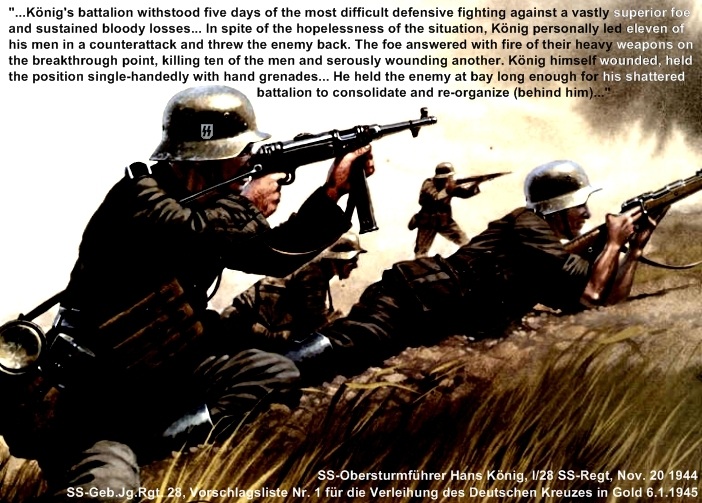

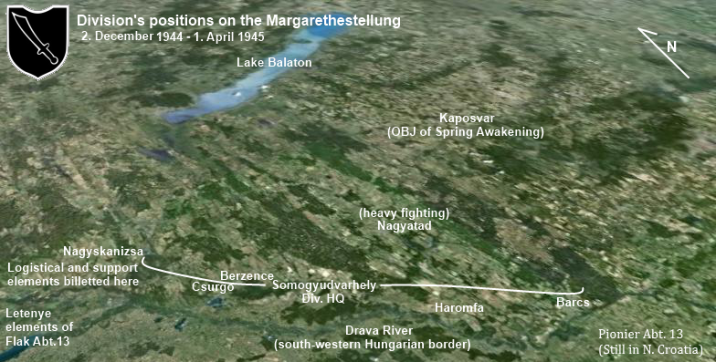


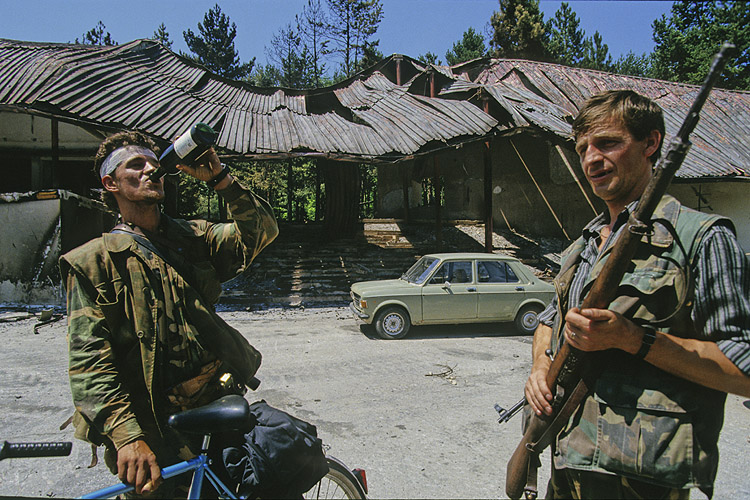
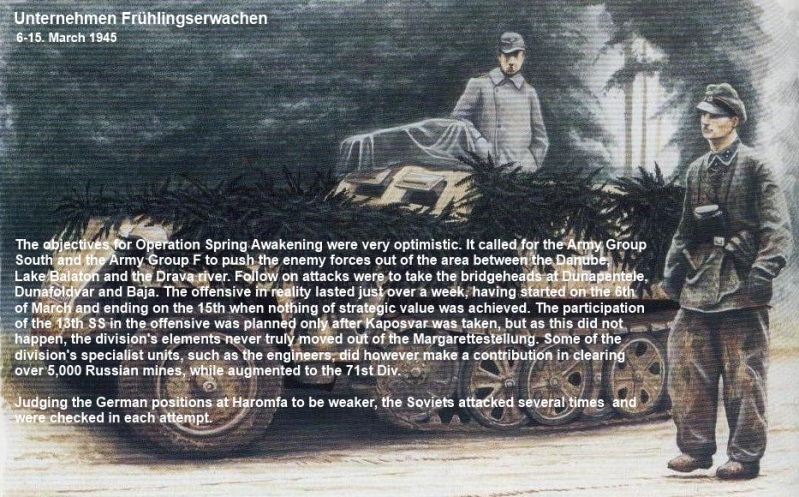
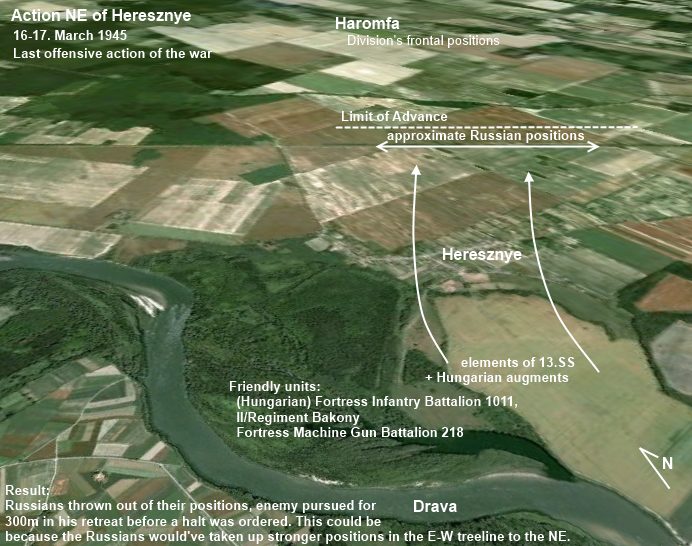
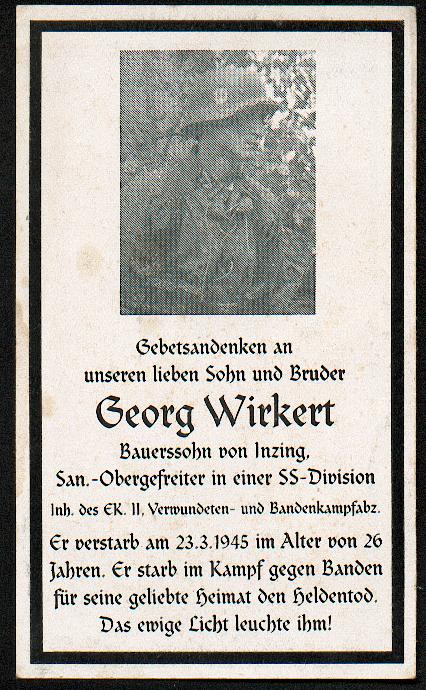

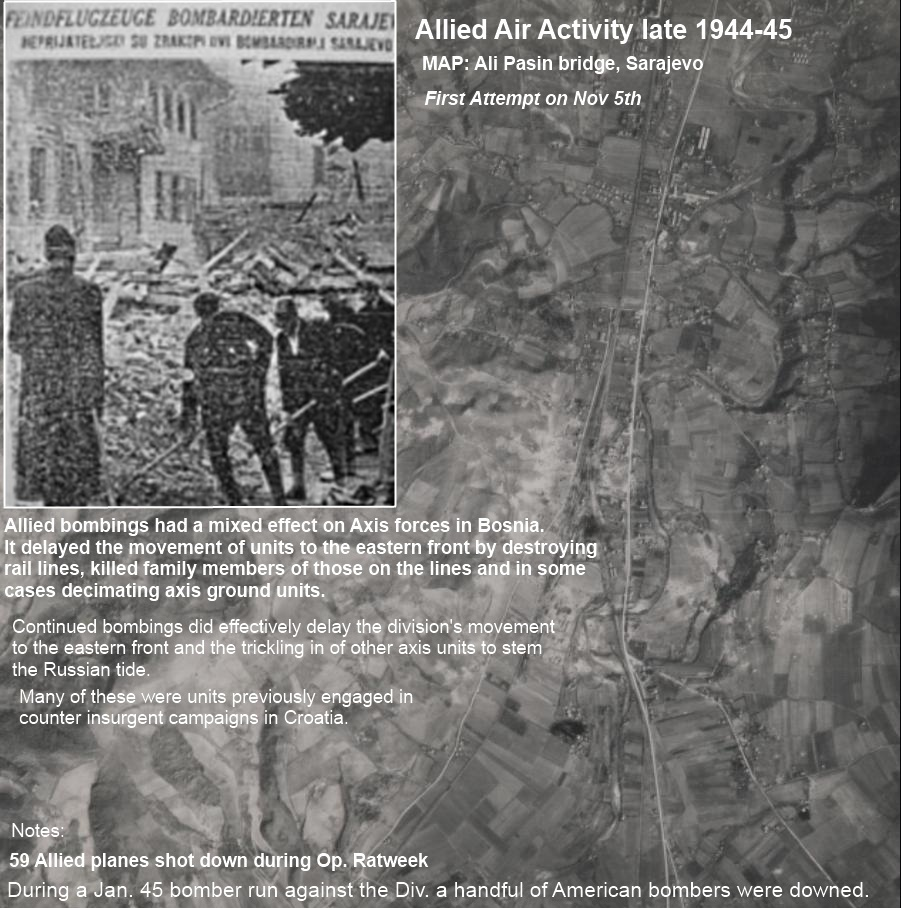
















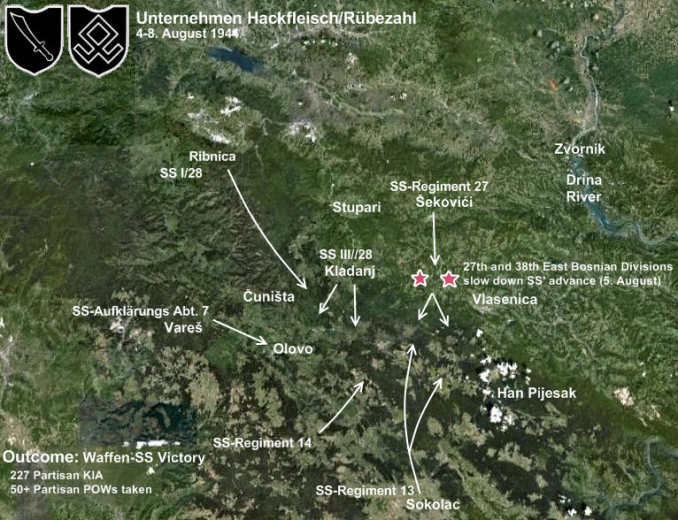
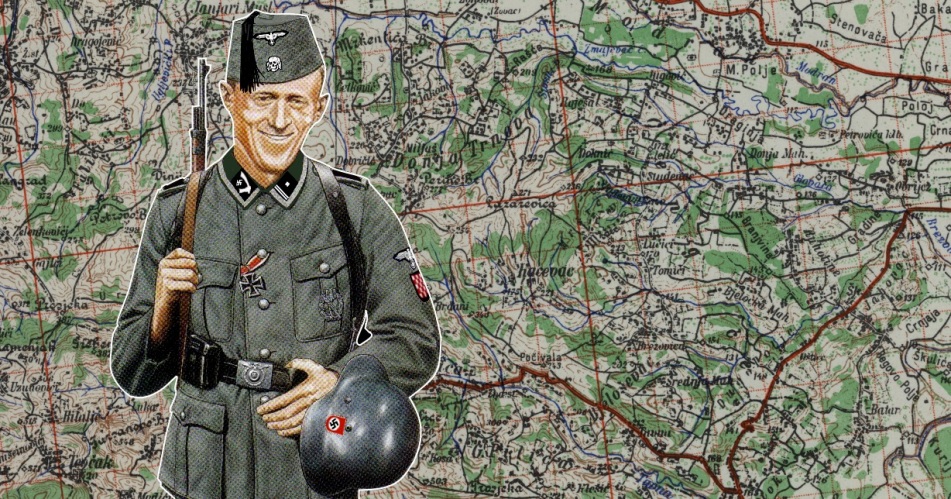
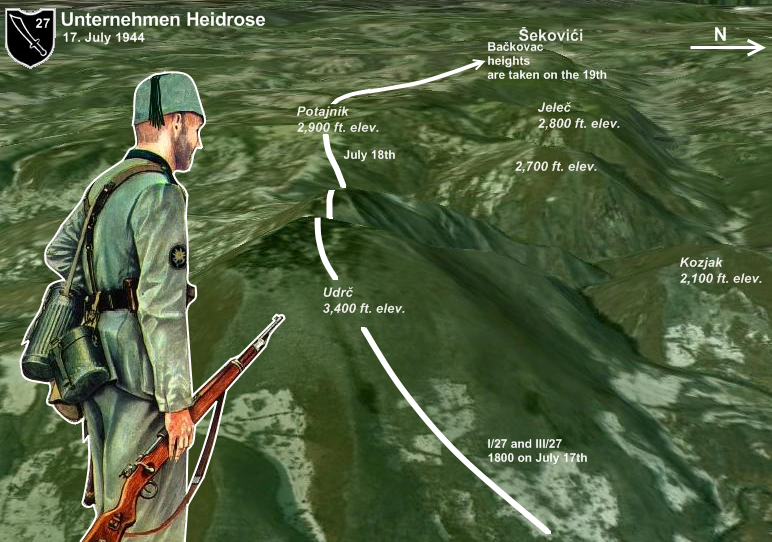

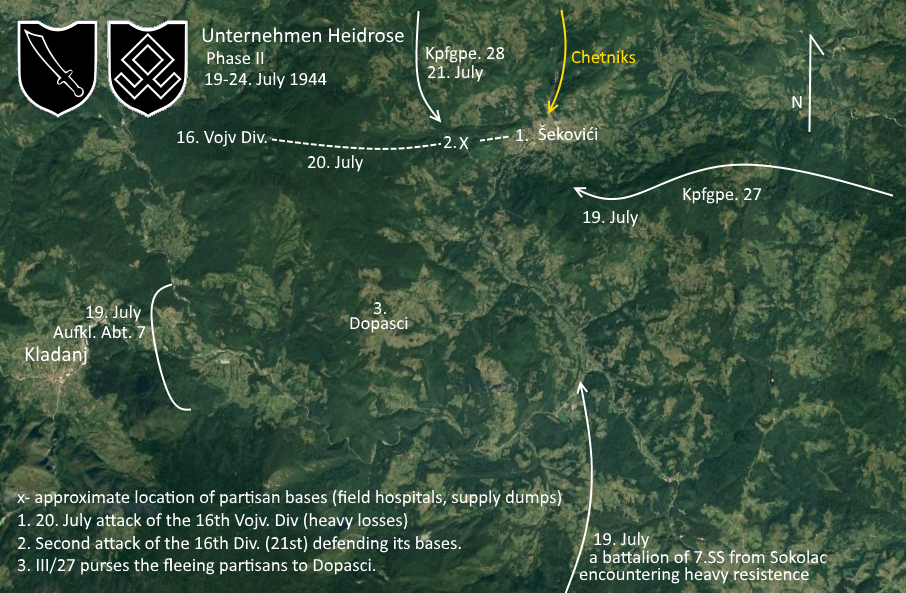
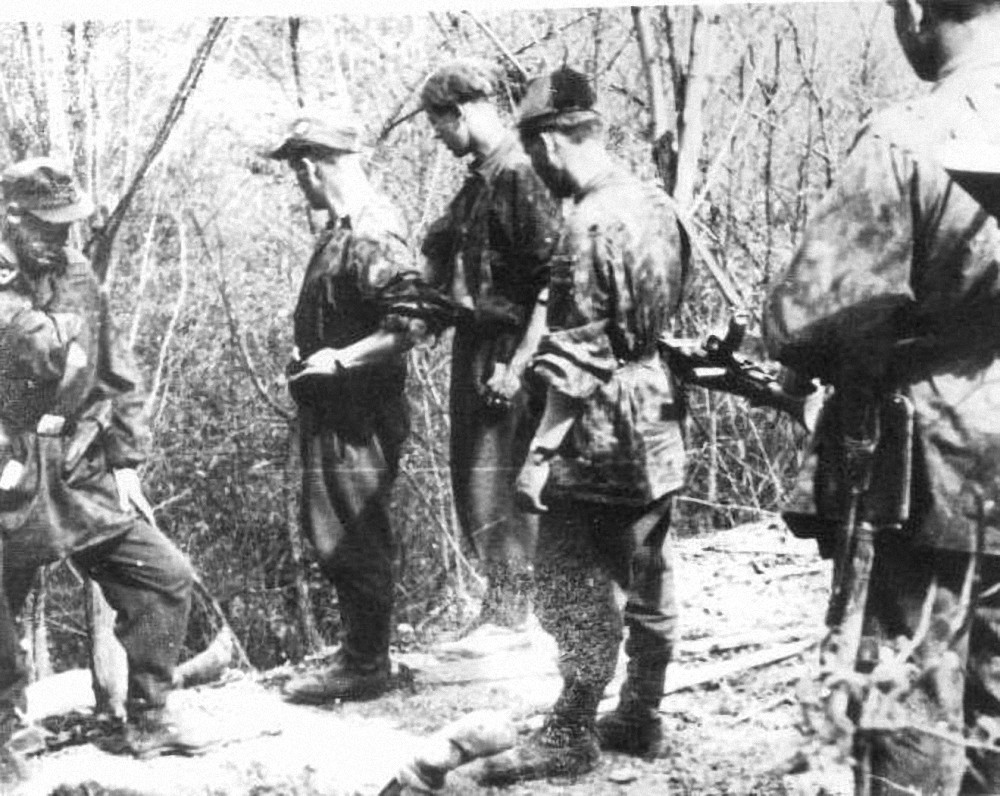
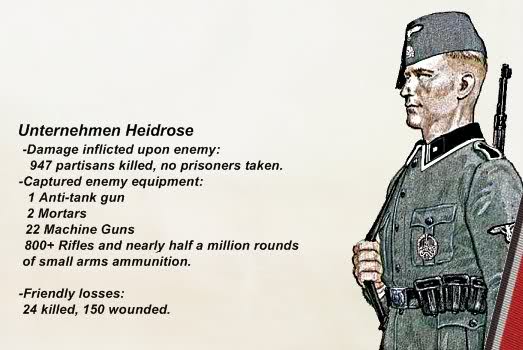
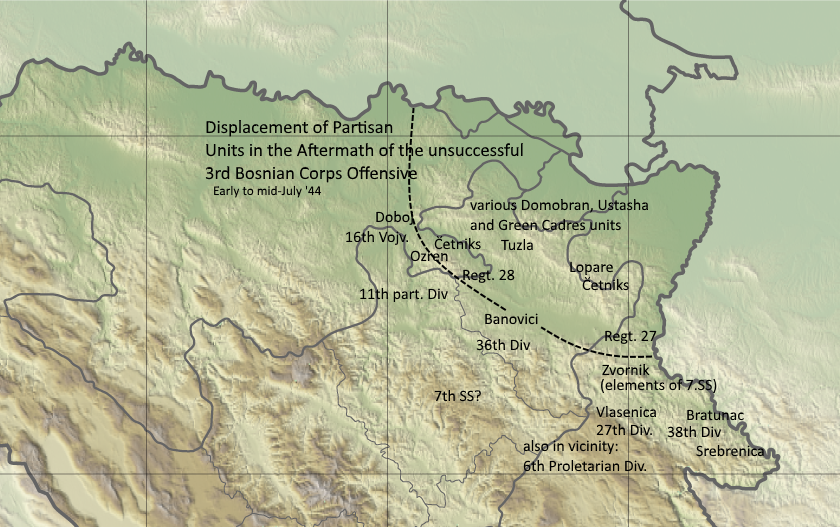

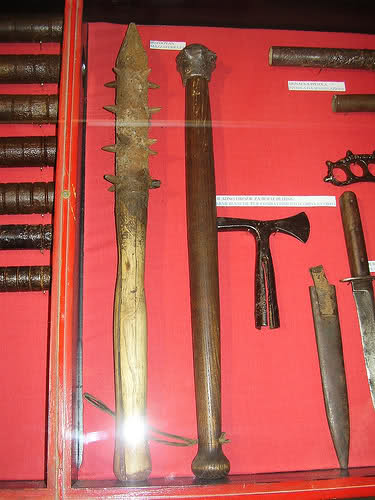
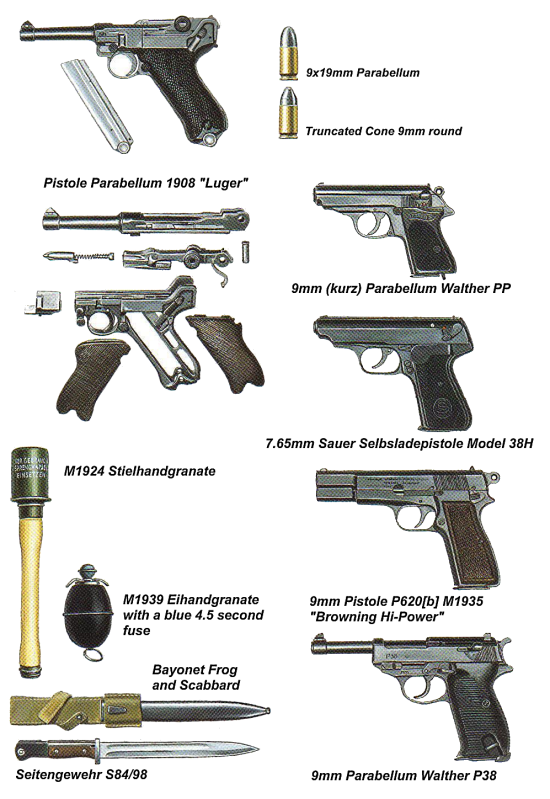


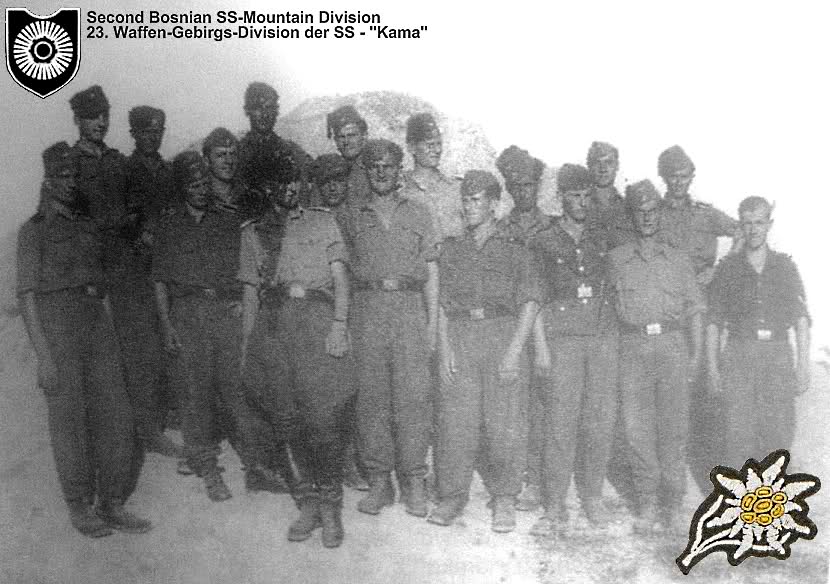
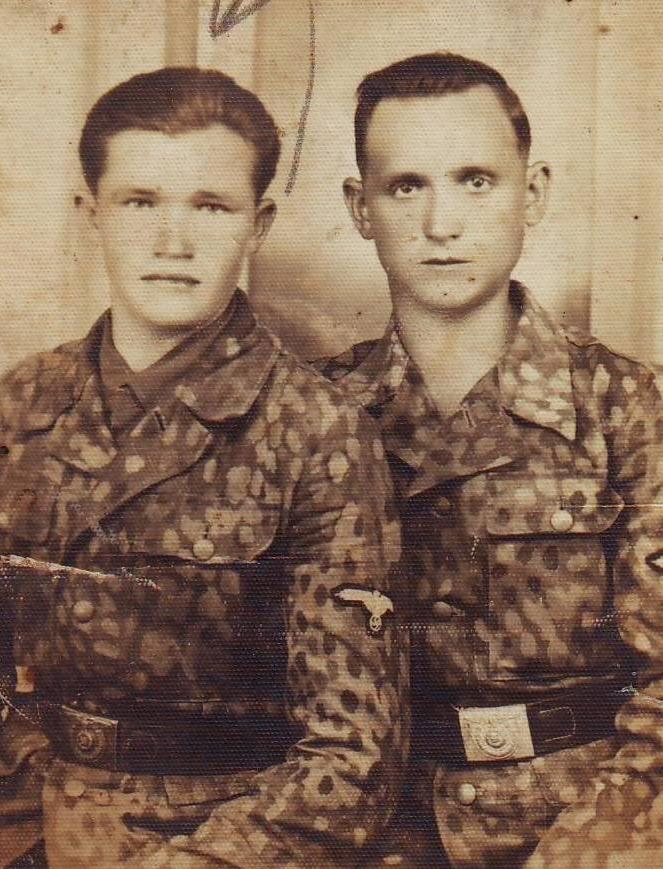
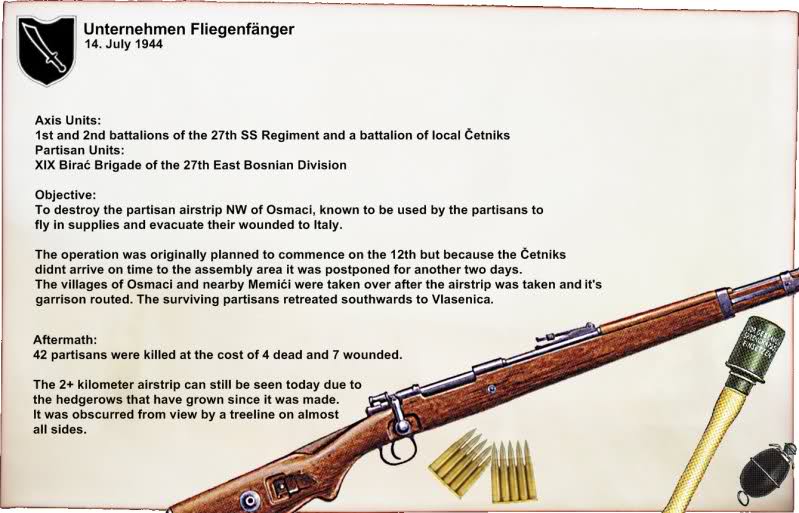
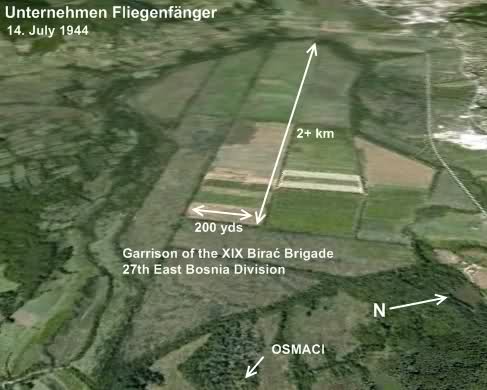
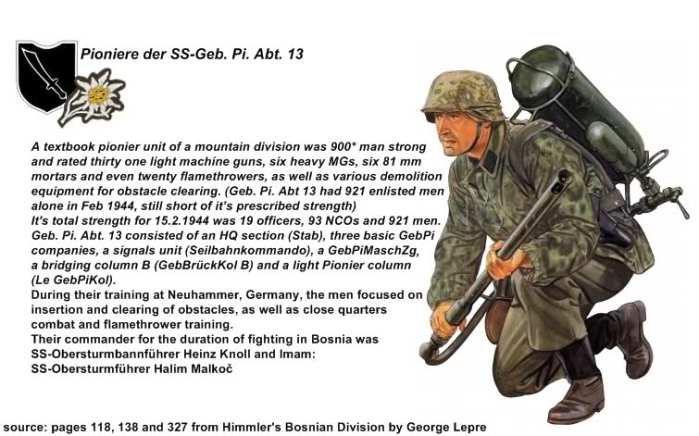
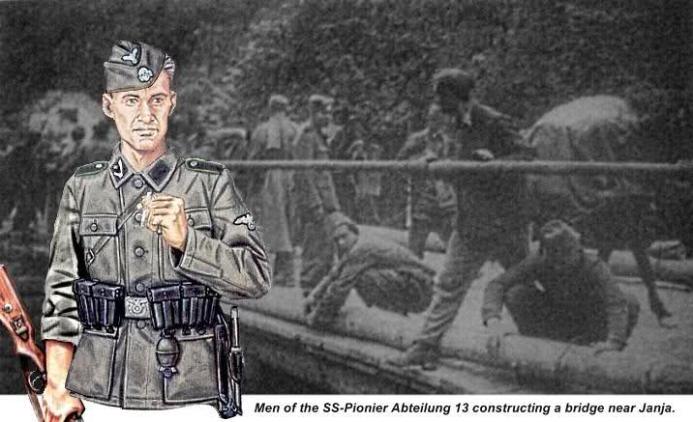
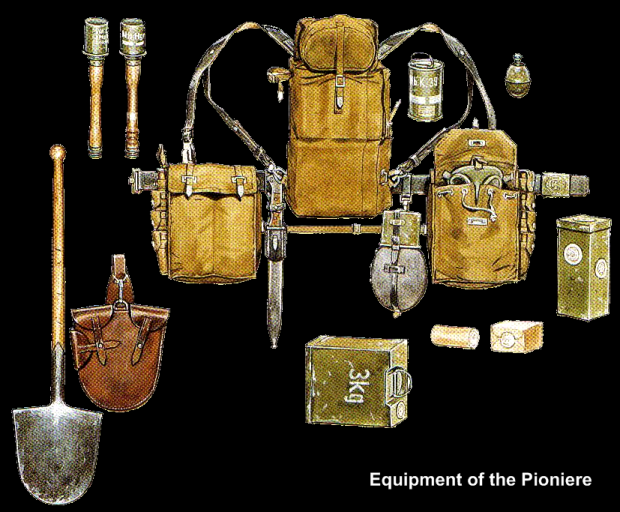
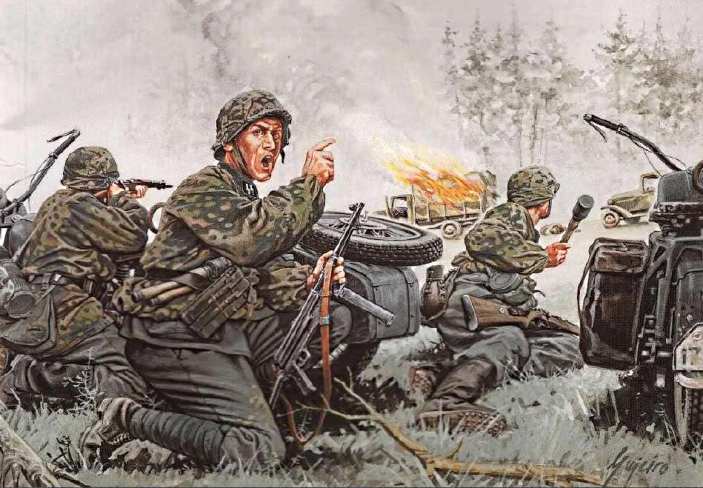
 SS issue smocks were a favorite among Aufklarungs troops.
SS issue smocks were a favorite among Aufklarungs troops.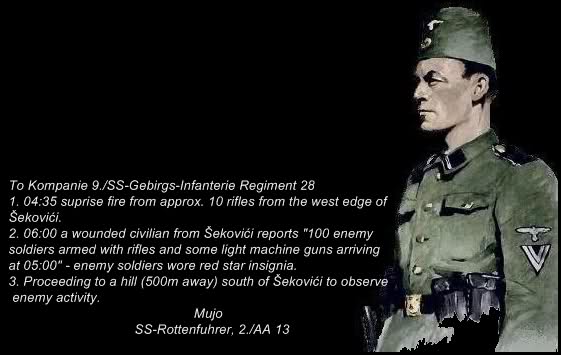
 A patrol on horseback conferring with a Chetnik about partisan whereabouts.
A patrol on horseback conferring with a Chetnik about partisan whereabouts.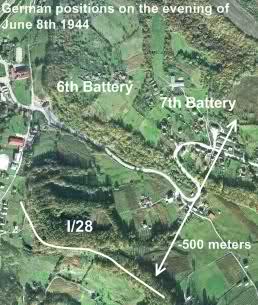
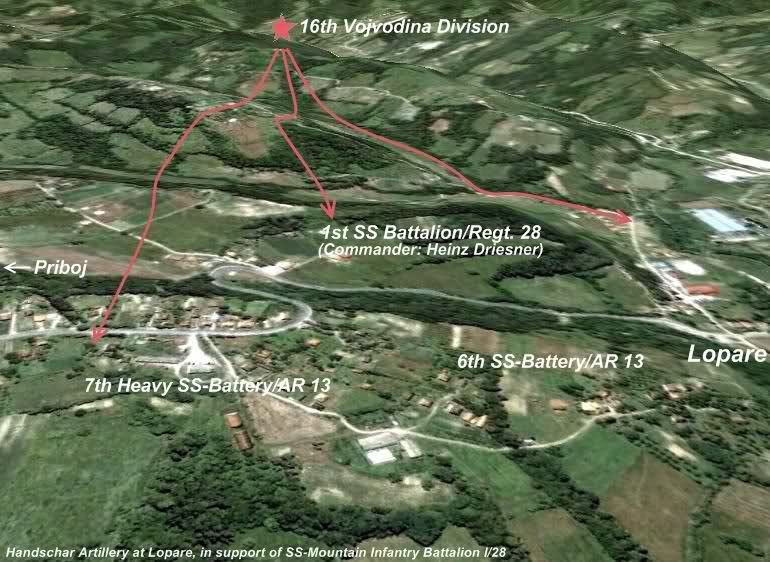 Lopare battle from the German perspective. (First hours)
Lopare battle from the German perspective. (First hours)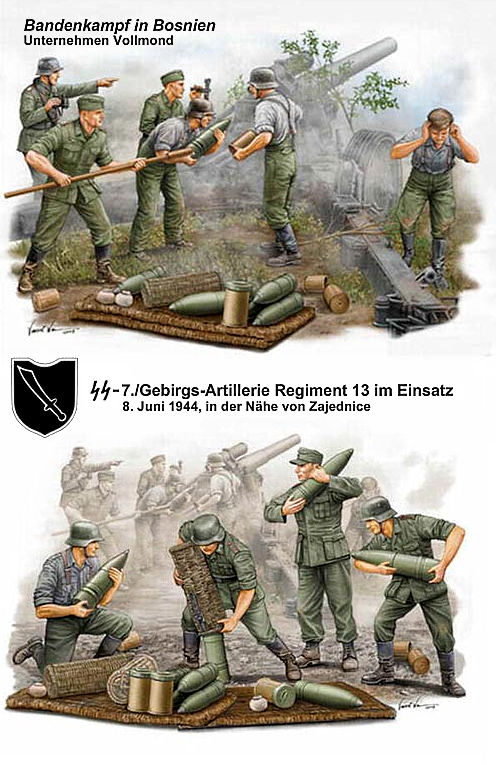 Rudolph directing fire for one of his sFH 18 Howitzers.
Rudolph directing fire for one of his sFH 18 Howitzers.
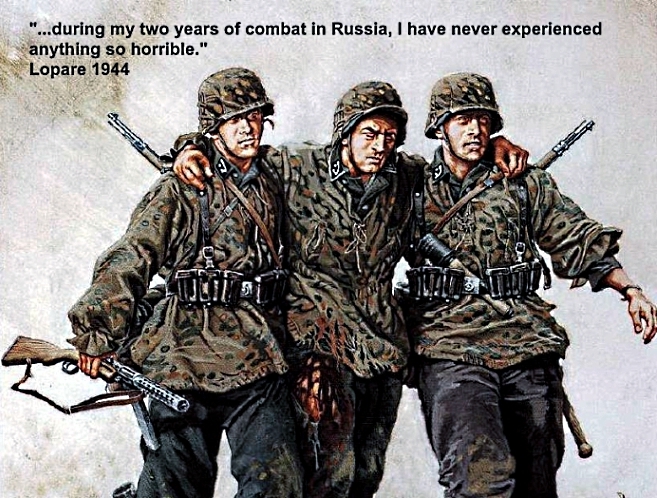 (Bergmann MPs were among the small arms used at Lopare)
(Bergmann MPs were among the small arms used at Lopare)